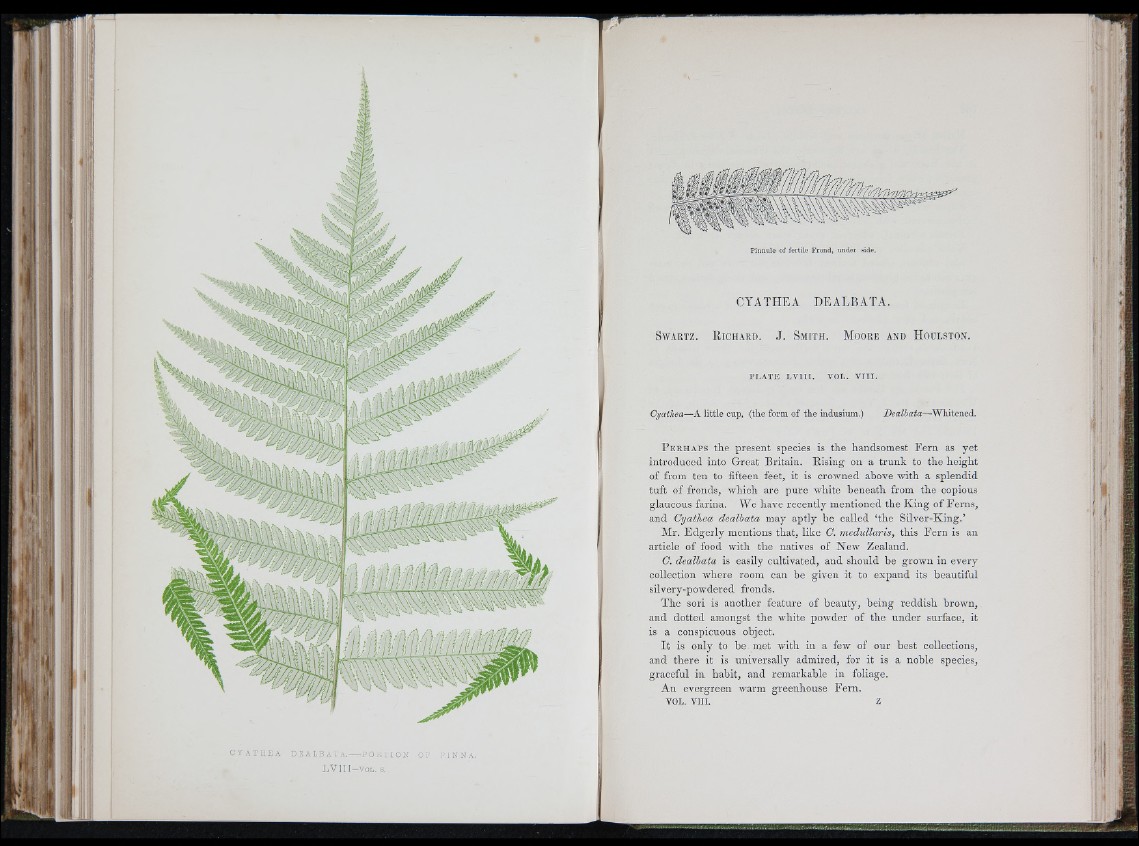
O Y A T i l E A D E A L B A l a . p O li i 1 0 K Or i I N N A.
L V I I I-VOL. 8.
Pinnule of fertile Frond, under side.
C Y A T H E A D E A L H A T A .
S w a e t z . R ic h a r d . J . S m it h . M oore a n d H o d e s t o n .
i r
P L .A T E L V I I I . V O L . V I I I .
Cyathea—A little cup, (the form o f the indusium.) Dealhata—Whitened.
P e r h a p s the p re sen t species is th e handsomest P e rn as j e t
in tro d u c ed into Gre a t B rita in . Risin g on a tru n k to th e h e ig h t
of from ten to fifteen feet, it is crowned above with a sp len d id
tu ft of fronds, which are p u re white b en e a th from th e copious
glaucous farina. We have re c en tly mentioned the K in g of P e rn s,
and Cyathea dealhata may ap tly be called ‘th e S ilv e r-K in g .’
Mr. E d g e rly mentions th a t, lik e C. medullaris, this F e rn is an
article of food with th e natives of N ew Zealand.
C. dealhata is easily cu ltivated, and should be grown in every
collection where room can be given it to e x p an d its b eautiful
silvery-powdered fronds.
T h e sori is another fe a tu re of b e au ty , be in g red d ish brown,
and dotted amongst th e white powder of th e u n d e r surface, it
is a conspicuous object.
I t is only to be met with in a few of our best collections,
and th e re it is universally admired, for it is a noble species,
graceful in h ab it, and remarkable in foliage.
A n evergreen warm greenhouse F e rn .
VOL. VIH. z
1 I
V‘ -
• \
I,